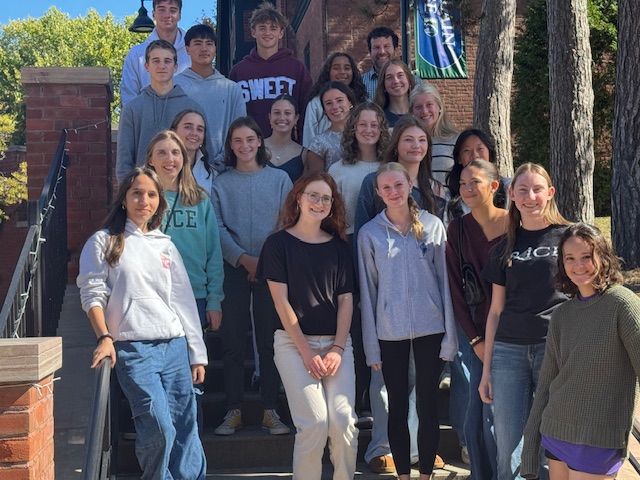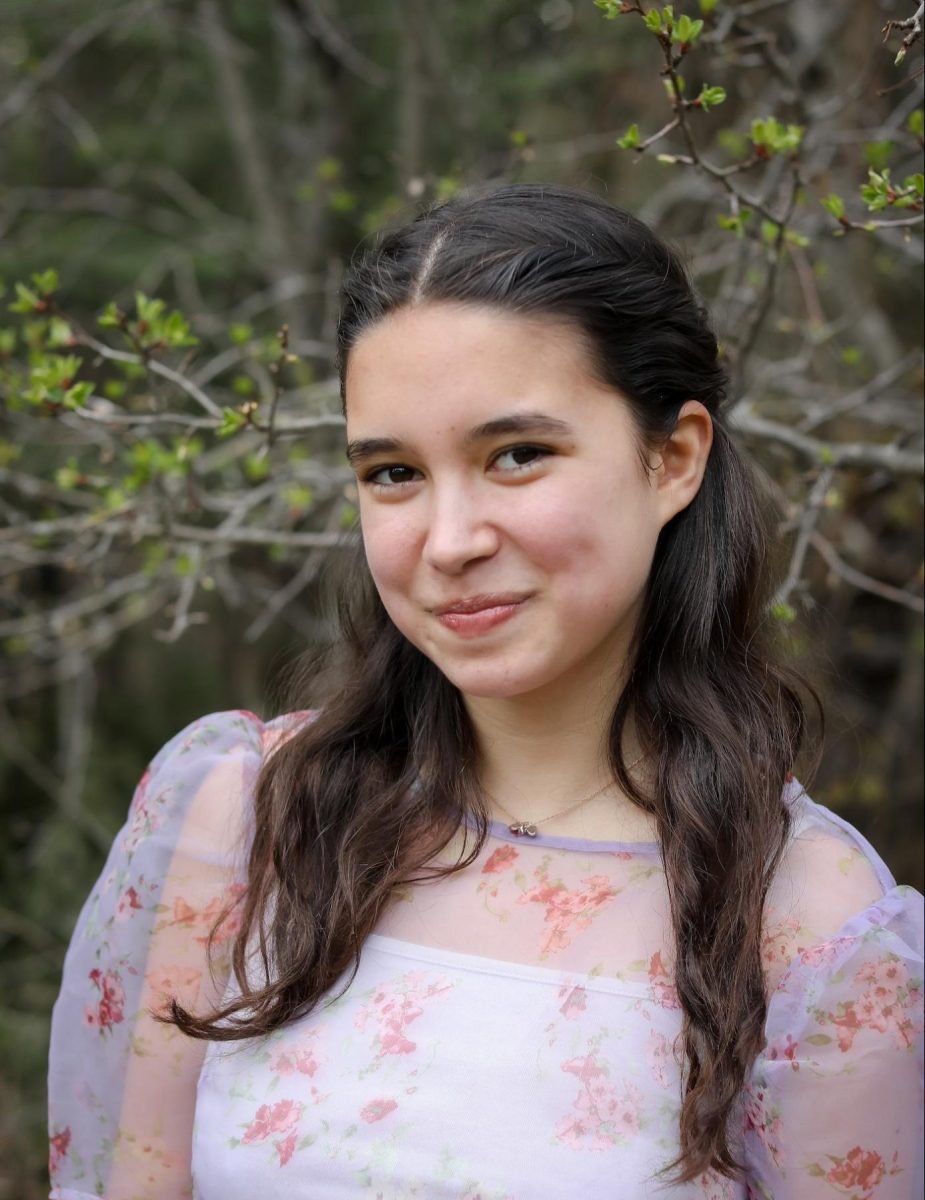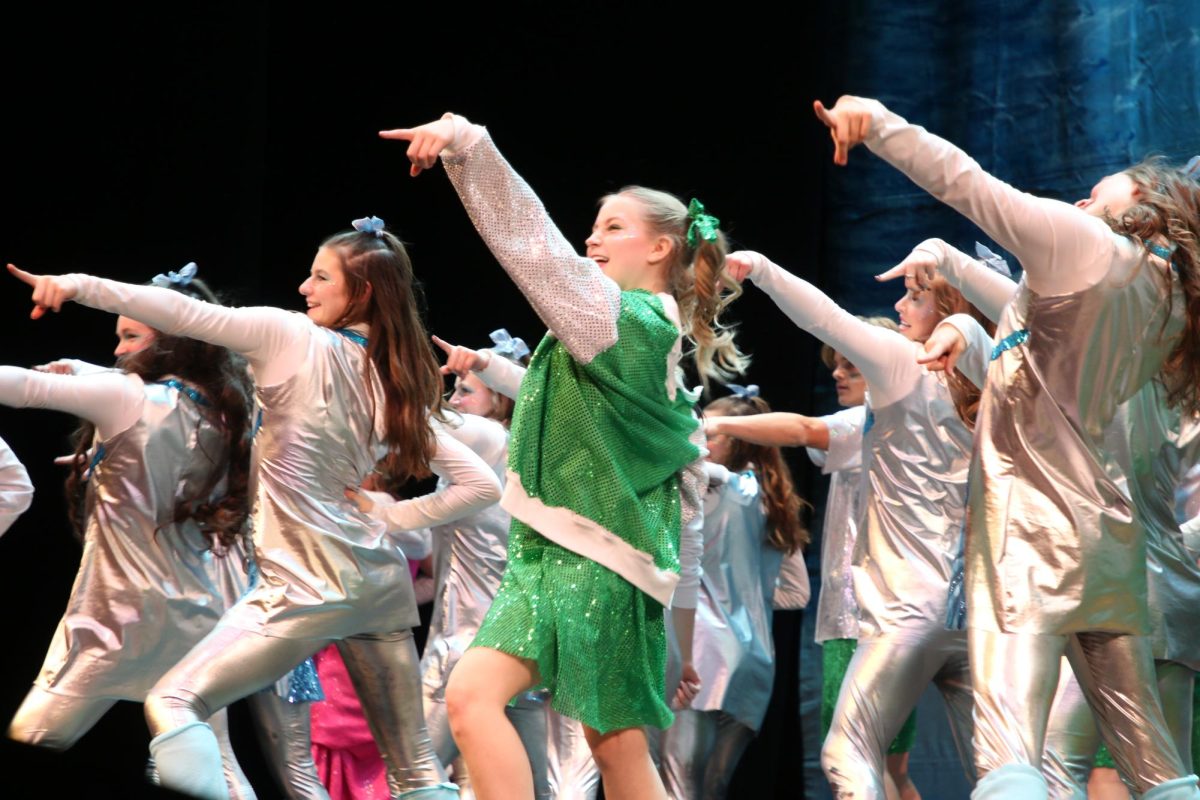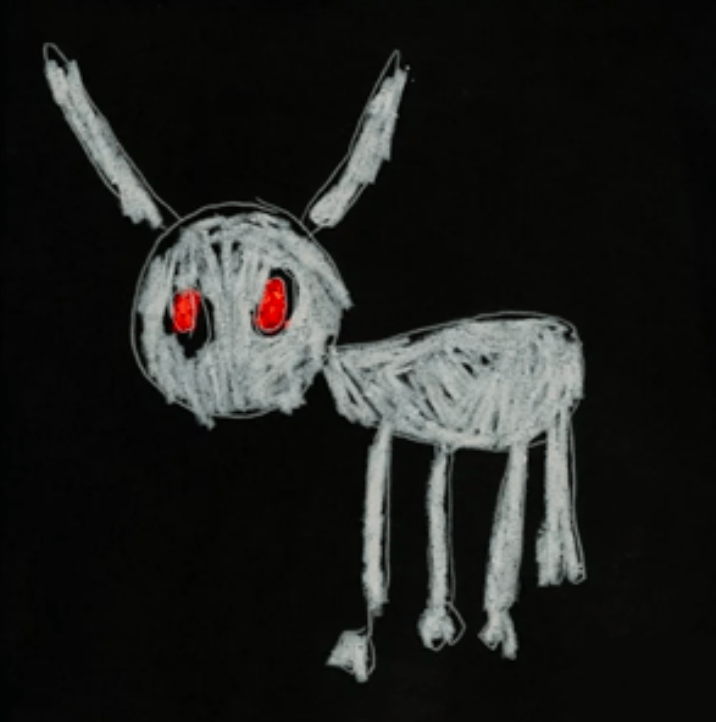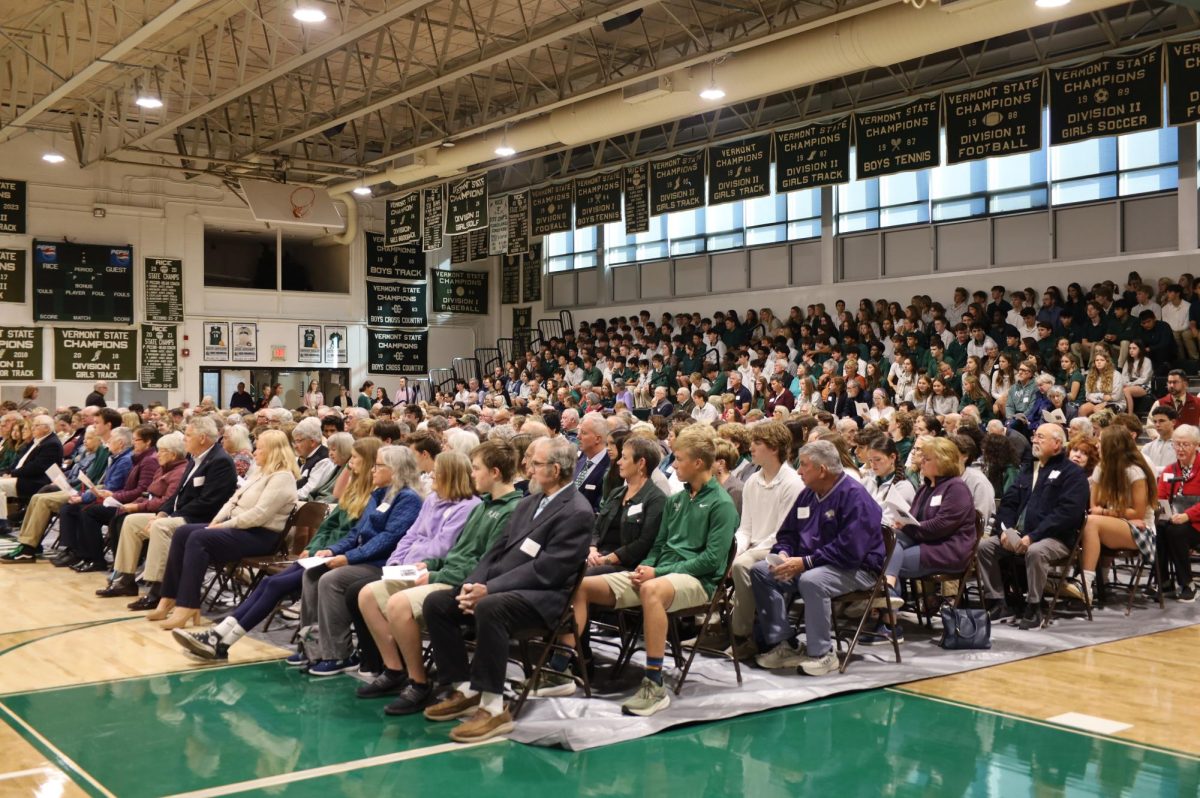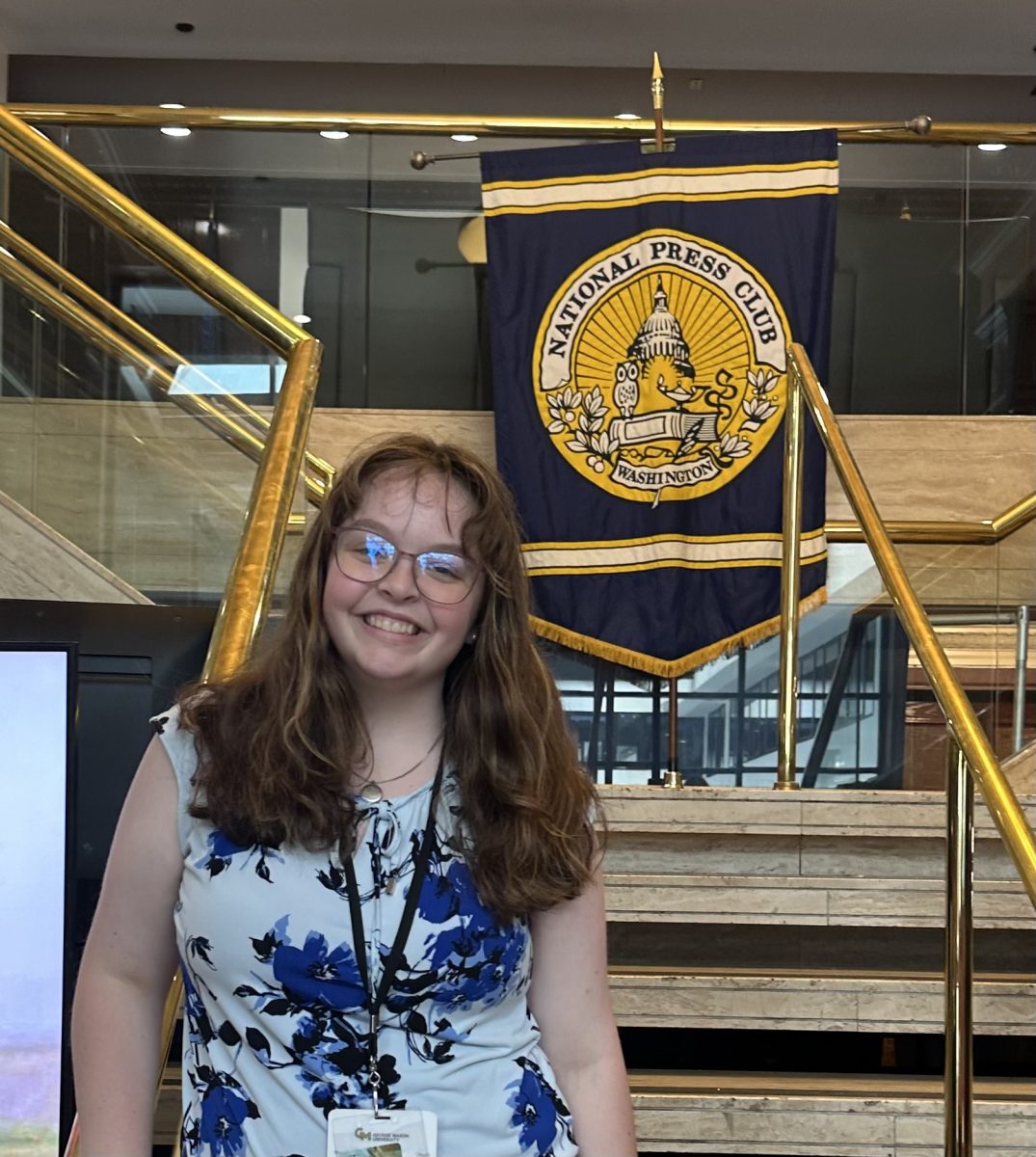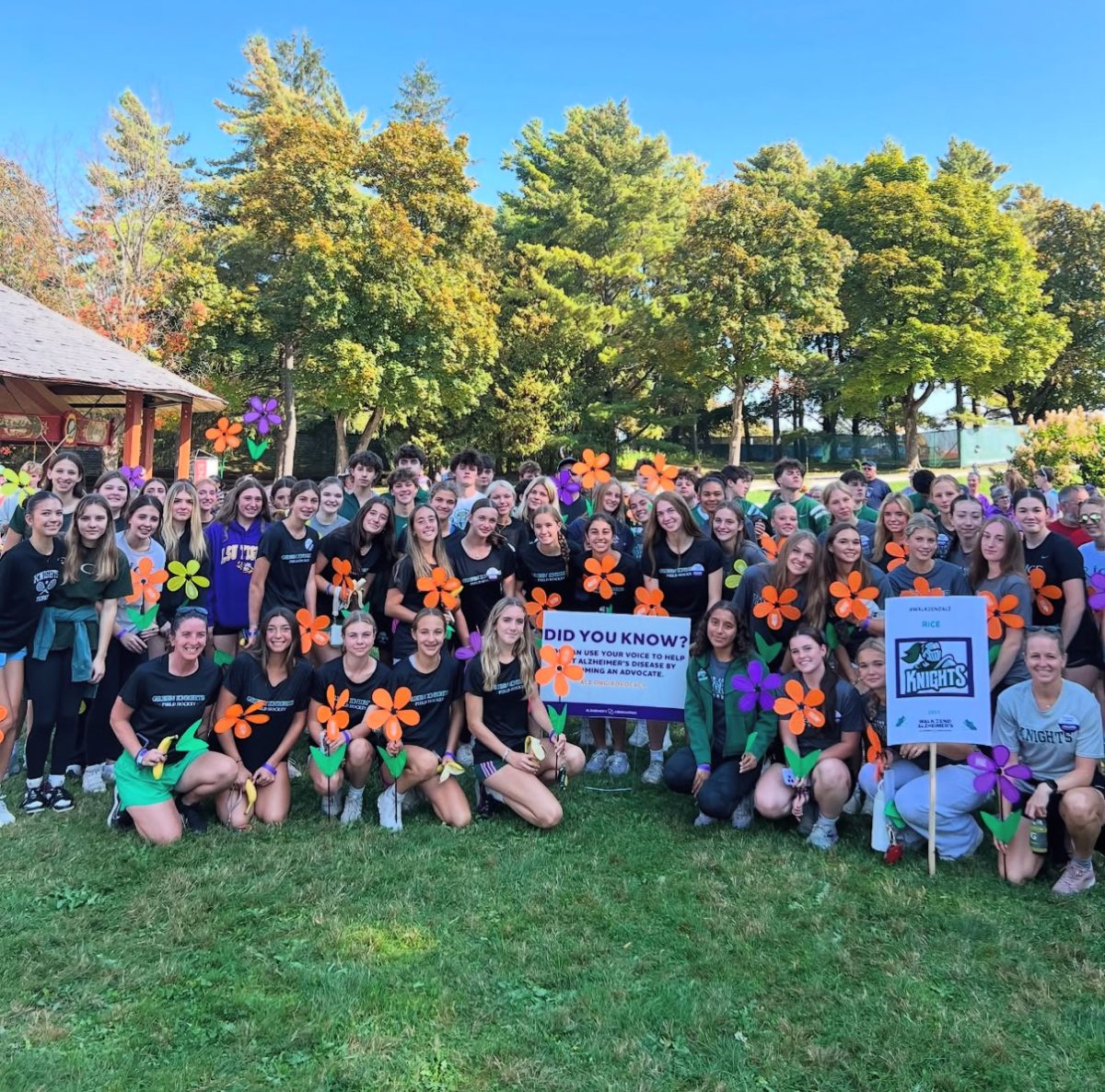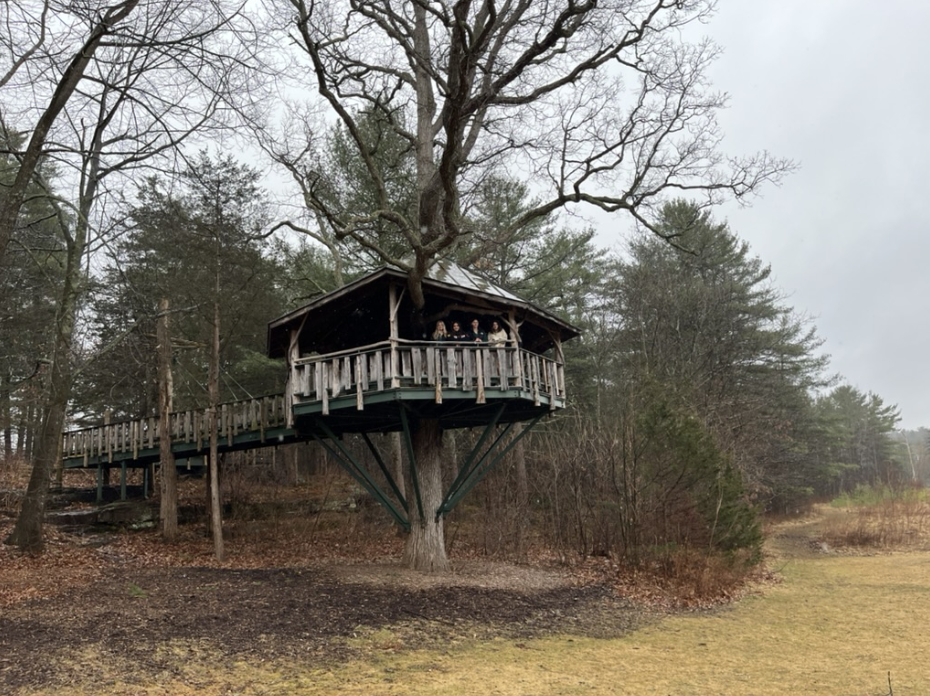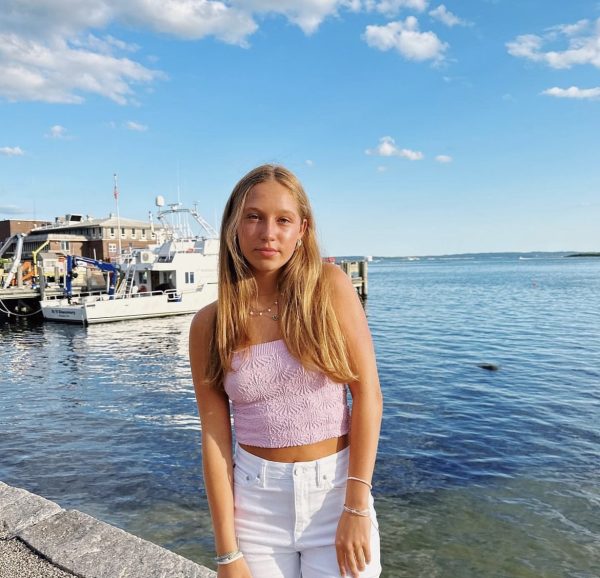The English and Science departments at Rice Memorial High School collaborated to bring a group of students to Champlain College for a day of poetry prose reading, environmental science, and reflection on Friday October 3rd. Hosted by Sundog Poetry and Vermont Humanities, this day was a day of changemaking by intersecting poetry and science.
Neil Shepard is a board member of Sundog Poetry and the creator of the Ecopoetics Symposium. Shepard held this idea back in the spring and began planning right away.
“I’ve been long interested in the interplay between science and poetry, have written [and continue to write] my share of poems centered on the environment- its wonders and its increasing stresses,” Shepard stated.
Shepard contributes editorials for the Plant-Human Quarterly which is a part of a larger organization The Otherwise Collective created by his daughter that publishes four different issues each solstice and equinox that focuses on anthropogenics. Because of his passions for both poetry and science, the event flourished.
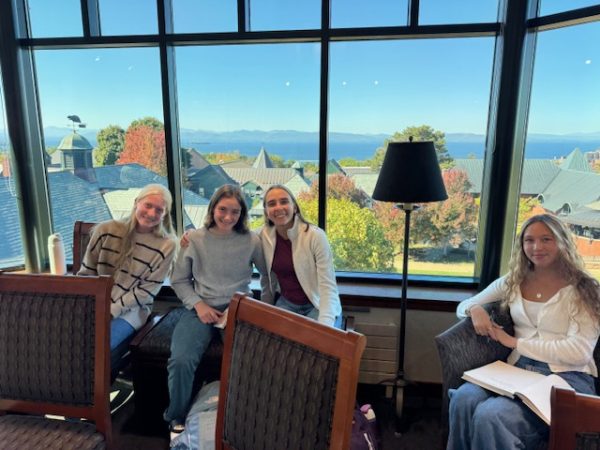
After arriving on campus and eating pizza under the clear sky in the courtyard, students split into workshop groups. In the Miller Room overlooking Lake Champlain, students attended an open mic poetry reading with college students, advised by Professor Jim Ellefson.
“I felt like the poetry readings exposed me to many new styles that I hadn’t seen before,” said sophomore Cambell Clarke. “ I don’t read a lot of poetry so getting to listen to it was a cool way to experience other techniques and types of poetry.”
As students continued to share their works, one particular Rice student, Maeyln Slavick, felt inspired enough to share one of her own titled “The Dreams of This Evening”, one she wrote for the Young Writers Project. The room was met with loud applause from her classmates and everyone vulnerable enough to share.
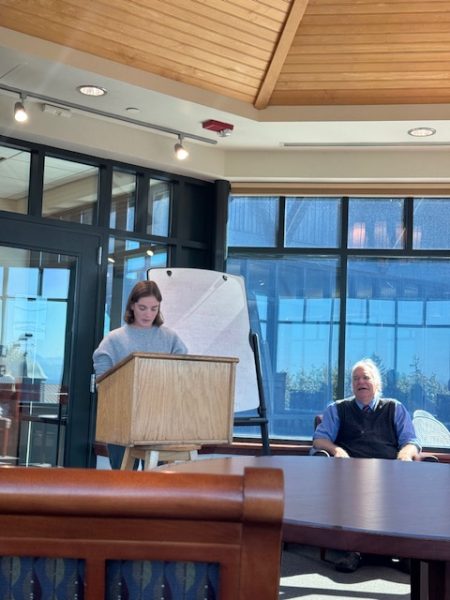
Valerie Esposito, the Director of Applied Sustainability and Environmental Studies and Policy program, led the other workshop in Foster Hall where she pushed students to reflect on their relationship with the environment and the anthropogenics that shape the world. The room was filled with students creating innovative answers to reflective questions such as “How can we be as generous as the wildland next door”,and adding voice to their responses.
After workshops, Rice and members of the community gathered in the Champlain Room where the broadsides lay, featuring Sophomore William Cunningham’s artwork of a detailed wolf and where the five featured poets and scientists shared their poetry and prose: Alison Hawthorne Deming, John Elder, Jody Gladding, Jane Hirshfield, and Nalini Nadkarni, each bringing with them a different perspective.
Hawthorne Deming is an author with six published poetry books and a former Agnes Nelms Haury Chair in Environment and Social Justice who shared pieces from her published work The Gift of Animals: Poems of Love, Lost, and Connection. She described that her “writing needed science”.
Nalini Nadkarni, who grasped the students attention immediately with her work as a National Geographic scientist, shared her experiences working in the rainforests researching canopies with a group she created to provide different perspectives. The group was made up of poets, rappers and scientists and she expressed how as a scientist she needed the communication of poets and artists to express her data to communities and find a new view to understand it.
As the poets wrapped up their final words, Rice students left and sat with their new discoveries on the bus back through the sunny day of downtown Burlington.
“Now that I’m living in the afterglow of the event, I can say it was thoroughly exhausting to produce but still worth the effort,” said Shepard. “And I hope the symposium itself managed to inspire folks, both young and old, to join the fight to save our one and only planet.”

